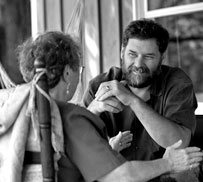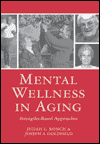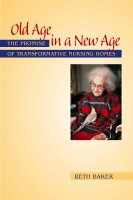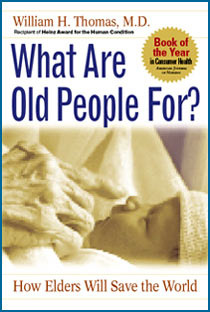![]()
Search
Recent Comments
- Bill Benson on
Blanchard WinsDays - Monkhouse Christa on
Kevin Frick writes... - Al Power on
Kevin Frick writes... - Peg Boyles on
Kevin Frick writes... - Christa Monkhouse on
Blanchard WinsDays - Imee on
Understanding Health Care Reform - Nick on
Understanding Health Care Reform - Steve Skrlac on
Too Old to Ditch a Plane? - Bonnie on
More on Age and Airline Pilots - Joe Podson on
Better Care for Seniors - Al Power on
Power Up Friday #2 - Dona Green on
Blanchard Winsdays: Crossing Deserts - Jodi an Atlanta Realtor on
Too Old to Ditch a Plane? - Joe Podson on
Power Up Friday #2 - Joe Podson on
Blanchard WinsDays - MLS in Metro Atlanta Ga on
Small Houses - Kate on
Parens Patriae and Surplus Safety - Sharon on
Belief-O-Matic - Dorothea Johnson on
Power Up Friday - Dorothea Johnson on
Here We Go! - Fran aka Redondowriter on
Tis the Season - Dorothea Johnson on
Bizarro - Joe Podson on
Parens Patriae and Surplus Safety - Joe Podson on
Bizarro - Joe Podson on
King Lear's Family Values - Joe Podson on
Ben's Adventure - nicobridge on
King Lear's Family Values - Joe Podson on
The Ripening - Nich on
The Ripening - Nich on
Meld, Merge, Mosaic
Recent Posts
- ChangingAging.org Redesign -- Please Bookmark!
- Green House in Alaska
- Power Up Friday: Attitude Matters, Dude
- The Green House Project
- Red Beer... an Acquired Taste?
- Newshour Video
- A Place Where Love Matters
- Arkansas Celebrates First Green House
- Age Does Not Discriminate
- And the Beat Goes On
- Who is Dr. Bill Thomas?
Category Archives
- AGING 100
- Aging
- Culture
- Dementia
- Eden Alternative
- Erickson School
- Green House
- Health Policy
- Longevity
- Media
- Rockets
Monthly Archives
- February 2009
- January 2009
- December 2008
- November 2008
- October 2008
- September 2008
- August 2008
- July 2008
- June 2008
- May 2008
- April 2008
- March 2008
- February 2008
- January 2008
- December 2007
- November 2007
- October 2007
- September 2007
- August 2007
 Subscribe to this blog's feed
Subscribe to this blog's feed
Announcements

Blog Data
Green House Archives
February 15, 2009
ChangingAging.org Redesign -- Please Bookmark!
Attention Readers! We are launching a new design for the blog that will be hosted directly at the URL www.changingaging.org. Please navigate to www.changingaging.org and reset your bookmarks and sign up for our new RSS Feed. In the coming days we will set up an automatic redirect to the new hosting site. See you there!
Web Master
Posted by Kavan Peterson on February 15, 2009 8:00 PM |Permalink |Comments (0)
August 2, 2008
Green House in Alaska
There is a nice article about the new Green Houses in Seward, Alaska
In a plot behind the Seward High School, bulldozers and other machines busily cleared land for the new long-term care center slated to open in the fall of 2009.The facility is part of the Green House Project, an innovative concept that replaces institutionalized elder care with a home-like atmosphere.
It’s the first such project in Alaska and one of only approximately 15 around the country, with another 40 or so in the developmental stages.
“These will be actual homes,” said Valerie Gunchuck, director of nursing at Wesley Rehabilitation and Care Nursing Home in Seward. “There is nothing institutional about them. We don’t even like to use that word.”
The Seward center, modeled after existing Green Houses, will be made up of four homes with a separate administrative building. Each house will contain 10 bedrooms with private baths directly off a centralized area termed the “hearth,” a large communal living room and kitchen which, according to Gunchuck, will look like “any other kitchen and living room in any of a thousand of houses you might enter.”
Houses will have enclosed patio areas and yards, with possible gardens. Pets are optional, depending upon the rules of that particular house.
All 31 Wesley residents will be transitioned to the center. Once situated, they’ll prepare meals together in one large kitchen and eat in a family-styled dining room. They’ll also be encouraged to decorate their bedrooms with furniture from their own home.
“They can do that here of course, but it still looks like a hospital room,” Gunchuck said. “You can only make a hospital room look like a bedroom so much.”
(H/T Alex M)
Posted by Dr. Bill Thomas on August 2, 2008 1:33 PM |Permalink |Comments (0)
April 4, 2008
Power Up Friday: Attitude Matters, Dude
There is no doubt that the Eden Alternative has been a major force in the movement to transform long-term care in our society. (That's a fact - I'm not just "kissing up" to the Blogmeister here.)
But even Bill Thomas will tell you that the Eden movement has caused a lot of people to pay too much attention to the superficial aspects of the new habitat - the dogs, cats, birds - what we call the "fur and feathers" of Eden. These are tools to help create a human habitat; but simply bringing a cat or a bird into a nursing home without embarking on deeper aspects of interpersonal and organizational transformation will yield poor results, (as many people have found when they have tried to "short-cut' the process).
Now the Green House Project (TM) has spawned a new movement to complete the physical transformation of long-term care through the construction of small homes that house only 8-10 elders. The media and society at large are paying attention. In addition to Green Houses, many other small house models are in development, and a new movement is born.
But every new trend has potential pitfalls for those who rush to adopt the concept without a deep understanding of its origins. So what do we need to watch out for next? What are the "fur and feathers" of these small house models?
Quite simply, it's the house itself. These homes are such a radical departure from any nursing home we've seen, that they cannot help but astound people who view them for the first time. What a great idea! Why haven't we thought of building these before?
There's an excellent reason why. If the building was all there was to it, we'd have built them a long time ago. However, our ATTITUDES about aged care have created the physical features of traditional nursing homes. Our society's view of aging as decline and our paternalistic approach to elder care have informed the institutions we have built over the past half century. You don't erase those biases simply by putting people in a small house.
I believe that small homes like the Green House are the future of aged care. The best ones, however, realize that the physical structure will not solve the plagues of institutionalization unless it embodies more than walls and windows. It must also reflect a new attitude toward aging and the aged, toward well-being and illness, toward risk and reward, toward autonomy, and toward collaborative approaches to care.
In short, we must build Green Houses in our minds, in our interpersonal relationships and in our operational design, before we lay that first cornerstone. Otherwise, it'll just be a 10-bed institution.
-- Al Power
Posted by Dr. Bill Thomas on April 4, 2008 10:19 AM |Permalink |Comments (0)
February 26, 2008
The Green House Project
Thanks to some great national news coverage of the Green House Project here, here and here, we're getting flooded with inquiries from folks interested in learning more. The best place to go to get involved is NCB Capital Impact, a national nonprofit organization that is implementing the $10 million grant from the Robert Wood Johnson Foundation to replicate the Green House model nationally.
For information, email us at changingagingATgmailDOTcom.
Posted by Dr. Bill Thomas on February 26, 2008 10:03 AM |Permalink |Comments (0)
January 25, 2008
Red Beer... an Acquired Taste?
More blog praise for the Newshour's special report on the Green House project:
I watch the Lehrer Newshour most night to unwind. By 8pm, I've eaten, cleaned up, and ready to sit on the couch for a while. Last night, the Newshour featured a new concept in nursing homes: the Green House. The idea came from a doctor in Nebraska who had worked in the elder care sector, and seen ways he thought he could improve the model. He has turned the institutional care facility that we are familiar with into a open-plan home. The home is built for about 12 to 15 elders each, and is tailored to their needs, rather than the needs of the institution. My favourite feature: twice weekly happy hours.
Thanks Rob, me too -- who doesn't love happy hour? Although after drinking Red Beer with Eva Goldsby, I still prefer my beer straight up. Also, Nebraska's a great state, but this doctor hails from upstate New York. And I'll correct you on one important note -- a critical part of the Green House model requires the household be limited to nine to 12 elders. The model cannot sustain an adequate level of care and community over that limit.
BlogHer
Virginia Debolt posted this video from YouTube showing what a Green House looks like and how the elders who live there react to the living arrangements:
Thanks also to Providence Women and Home Life News blogging about the Newshour story.
Click here to watch the Newshour segment.
Click here for more information on the Green House project.
Posted by Dr. Bill Thomas on January 25, 2008 11:11 AM |Permalink |Comments (2)
January 24, 2008
Newshour Video
Streaming video of the Newshour report on the Green House project can now be viewed online -- click here.
Posted by Kavan Peterson on January 24, 2008 11:54 AM |Permalink |Comments (1)
A Place Where Love Matters
Editor's Note: Thanks to Providence Women for this post on Dr. Thomas' Newshour appearance:
Did you see the Lehrer News Hour this evening, January 23, with the story about transformative nursing homes? Dr. Bill Thomas, geriatrician and nursing home reformer was interviewed in one of his “Green House” nursing homes in Lincoln, Nebraska.
The twelve-minute story highlights two primary characteristics of the Green House concept – characteristics of all transformative nursing homes. The first, making the nursing home HOME, with all the implications that follow. The residents interviewed testify to that. So do the front line workers in a more indirect but compelling way. From the transcript:
Ebmeier, Nursing Home Administrator, and the shahbazim, (plural for shahbaz, name for traditional certified nurse assistants), tell the story of one former Green House elder, Mary Valentine, who celebrated her 101st birthday in the Green House.
JOYCE EBMEIER, Administrator: One of the shahbazim went to her and said, "Well, Mary, what do you want to do? What shall we do so that you have a great birthday?" And she looked at the shahbaz and she said, "You know, what I really want is a margarita and a cigarette."SUSAN DENTZER, Narrator: And that's what she got, as seen in this picture, taken as she and her daughter celebrated on the Green House's front porch. When Valentine died soon after that memorable day, the shahbazim were crushed. They told us that was the downside of life in the Green House, saying goodbye.
THOMAS COOPER, Shabaz: The night after she had passed, my dog (note the place of animals in this setting) went into her room, and jumped up on her recliner, and sat where Mary used to sit. That was really emotional for me, and for the whole group of shahbazim, and the whole team.
JOYCE EBMEIER, Administrator: Death gets harder in a Green House because, when you are smaller and when you are engaged in the way that the shahbazim are engaged in the lives of the elders they love so much, it is like losing your dearest family member.
The video shows a hanging plaque which reads: “In memory of Mary Valentine. May her spirit protect, nurture and sustain all who enter here.”
DR. BILL THOMAS: In long-term care, love matters. And the heart of the problem is institutions can't love.
snip...
The story from Lincoln, Nebraska is heartening. There are not enough of these HOMES yet. We MUST liberate our elders from traditional nursing home and bring them HOME.
Click here to continue reading A Place Where Love Matters.
Click here to watch the streaming video.
Posted by Kavan Peterson on January 24, 2008 8:06 AM |Permalink |Comments (0)
November 30, 2007
Arkansas Celebrates First Green House
From Jeff Mores of the Benton Daily Record in Arkansas:
BENTONVILLE — There was a day when senior care meant moving into a hospital-style nursing home.Things have changed. And in Arkansas, Bentonville’s Legacy Village is leading the way.
Posted by Kavan Peterson on November 30, 2007 10:56 AM |Permalink |Comments (0)
October 9, 2007
Age Does Not Discriminate
New York Times reporter Jane Gross fronts a fascinating look at "the plight of the gay elderly:"
"[A] generation of gay men and lesbians, concerned about their own futures, have begun a national drive to educate care providers about the social isolation, even outright discrimination, that lesbian, gay, bisexual and transgender clients face."
[snip]
"In the Boston suburbs, the Chelsea Jewish Nursing Home will break ground in December for a complex that includes a unit for the gay and lesbian elderly. And Stonewall Communities in Boston has begun selling homes designed for older gay people with support services similar to assisted-living centers. There are also openly gay geriatric case managers who can guide clients to compassionate services."
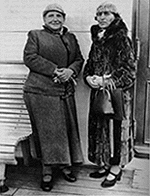
Here is a nice article that explores the background of the issue.
Posted by Dr. Bill Thomas on October 9, 2007 9:09 AM |Permalink |Comments (0)
October 8, 2007
And the Beat Goes On
The range and sophistication of non-institutional community-based alternatives to conventional long-term care continue to grow. Many people are glad. Some wish that the status quo would last forever.
David Harlow's Health Care Law Blog picks up the thread with a nice summary of the state of the art. I found the following to be especially interesting.
The latest entrant in this field of alternatives to traditional nursing facilities is the Going Home program in Massachusetts, highlighted in today's Boston Globe story about a four-resident home in West Peabody operated by North Shore Elder Services, which plans to add additional sites. The home provides a residence, a live-in aide, meals, and other services as needed. Per the Globe, services cost another $3,600 to $4,000 per person a month at West Peabody, covered through the Medicaid and Medicare programs, because the residents have medical and physical conditions that would otherwise qualify them for government-paid nursing home care. The total cost per day is less than the $187 average state payment for nursing home care, but more than the state pays for the least-ill nursing home residents.The story continues:
Because the houses are not subject to state regulation like nursing homes, some question whether residents would be adequately protected. There have been occasional abuses in state-funded homes for the mentally ill.
Organizers say there are multiple checks and balances in the way the houses are run. One of the regular duties of the elder service agencies is to investigate abuse and neglect for the state. The agencies' staff monitors the care provided in the houses. And other professionals, obligated to report abuse, are regular visitors.
The market for these services is likely robust and it will be interesting to follow the growth of this initiative in Massachusetts and elsewhere.
This photo is titled "Going Home" and comes from a collection of images from Randy Putnam's tour of duty with the 174th AHC, circa 1967 -1968.  Take a look. If you like what you see, drop a line to JimMcD (webmaster)
Take a look. If you like what you see, drop a line to JimMcD (webmaster)
Posted by Dr. Bill Thomas on October 8, 2007 8:59 AM |Permalink |Comments (1)
August 30, 2007
Who is Dr. Bill Thomas?
Dr. Bill Thomas is an international authority on geriatric medicine and eldercare. He is a professor at the Erickson School at the University of Maryland, Baltimore County and has been heavily involved in the culture change movement to promote elderhood as an honorable and valuable position in our society. Click here to read more.
Eldertopia and the New Old Age
Dr. Bill Thomas: Eldercare, aging and us
Dr. Bill Thomas speaking at the 2007 Pioneer Conference, Part 1:
Dr. Bill Thomas at the 2007 Pioneer Conference Part 2:
What Is Old Age For?
by William Thomas
Old age is humanity's greatest invention, and on an even deeper level, it invented us. Old age transformed the way our most distant ancestors gave birth, reared their young, lived together, and fed themselves. Later it propelled the development of culture, language, and society.
Humans are primates, and among all primates we are most closely related to chimpanzees. We hold 98 percent of our genetic code in common with them. Yet a comparison of human and chimp life cycles reveals some unexpected differences.
Human beings can live twice as long as our nearest relatives—surprising in itself. Astonishing, however, is that all of this additional longevity follows the loss of fertility. Chimp and human females become fertile at nearly the same age and remain fertile for about four decades. For the aging chimpanzee, death follows hard on the heels of the loss of fertility. The human female possesses a nearly 50-year longevity bonus that follows the end of fertility. Our post-reproductive longevity exists because it affords our species a unique and powerful competitive advantage. Hidden within this extraordinary elongation of life is the story of who we are and how we came to be.
The first grandmother
One million years ago on the plains of Africa, a hominid child cries out from hunger. Her mother has recently given birth and is distracted by the needs of her helpless infant. The delivery was long and difficult and much blood was lost. The mother barely has the strength to nurse her infant. She can neither feed nor care for her older child. The mother of the new mother, the grandmother of the crying child, is moved to act. Thus was the first tentative step taken down the long road that led to the development of the modern human being. The deliberate enlistment of grandparents into the work of rearing the young stands as a defining characteristic of Homo sapiens.
Substantial advantages accrue to offspring who can be cared for by two generations of adults. The extra food and attention significantly improve survival rates. University College researchers in London found that in Gambia, infant mortality rates dropped by 50 percent if the maternal grandmother was present in the household (interestingly, no benefit was found when the paternal grandmother was in residence). Ruth Mace, one of the researchers, noted that the presence or absence of the father had no bearing on infant survival: “If the grandmother dies, you notice it; if the father does, you don't.”
Research in India has found similar results. Surely the grandmothers' contributions of time, energy, and material resources across generational lines are important, but that is not all there is to it. Humans, in particular humans living in active multigenerational families and communities, benefit from intergenerational affection.
The genius of human longevity
The development of menopause and the refinement of grandparenting played a critical role in the physical evolution of the modern human, but the story does not stop there. About 40,000 years ago, another remarkable round of adaptations changed how people lived. Homo sapiens generalized the benefits of grandparenthood by linking old age to the work of social evolution. The development of human culture—its refinement, storage, and transmission—was woven into the fabric of old age.
An African proverb says, “The death of an old person is like the loss of a library.” In these words are embedded the important role given to older adults in many African cultures. After a person has productively lived his or her life as an adult in the community, he or she is honored by initiation into the elder circle. This usually happens around the age of 65.
These elders, now masters of the school of life, have the responsibility for facilitating the transition from childhood to adulthood of new generations. They are responsible for and oversee the process of initiation. The idea of elders as “library” also reveals the fact that only the elders have full access to the tribe's knowledge base. The elders safeguard the highest secrets of the tribe and protect its medicine and inner technologies. They incarnate the wisdom of the society, which they happily share, often in the form of storytelling.
Anyone in the last half of life can attest to the difficulties, the aching joints, the fading eyesight. What is open to interpretation is the meaning of these changes. What if they are understood as a form of preparation (not unlike adolescence) for a new life as an elder of the community?
The physical decline that comes with aging actually cements the relationship between old and young. Indeed, an old man still capable of stalking, killing, and butchering a mastodon would have little inclination to spend hours doting on grandchildren, telling them stories, and instructing them in the ways of their people. An old woman still capable of producing young of her own would hardly be inclined to pour time, love, and attention into the lives of her grandchildren. The physiological changes that accompany old age, and upon which contemporary society heaps unlimited scorn, are actually essential preconditions for a socially productive old age.
Human elders have long been known as peacemakers, and for good reason. The physical changes that accompany advancing age make conflict, armed and otherwise, worthless to the old. Like statesmen serving their final terms in office, elders are freed from the tactical maneuvering that defines the struggle for adult rank and prestige. It is this freedom that allows them to put forth unique interpretations of the problems faced by their families and communities. The awareness of one's mortality that normally arises in late life—and so terrifies adults—opens new perspectives for elders on the world in which they live.
Being an elder
The promises of the current anti-aging fad perpetuate an illusion of unlimited longevity. This strengthens the characteristic adult devotion to doing, having, and getting. The result is an underdeveloped, increasingly dysfunctional population of developmentally delayed adults who are prone to catastrophic errors of judgment. The mania for
having and getting diminishes the value of stewardship in our culture. The preservation of resources for the benefit of those yet to be born, or even for the common good of those living now, is airily dismissed as simple-minded idealism. At the root of it all is the adult fantasy of unlimited time, unlimited wealth, unlimited resources, and unlimited information.
Adulthood itself is a right and fine thing. I am an adult. I love adulthood. I find daily pleasure in living as an adult and have no interest in returning to the childhood I have outgrown. Nor am I ready to enter into an elderhood that requires perspective, experience, and judgment that I do not yet possess. Adulthood, rightly understood, provides us with a productive, potentially glorious interlude between youth and old age. The problems begin when we conceive of it as a permanent necessity, an apex of human experience that must be defended and enlarged no matter what the cost.
Adulthood is chained to the rock of doing. When two adults meet, it is rare for more than a minute to pass before one of them pops the question, “What do you do?” Adults inhabit a world of tasks and schedules, payments, obligations, and jobs that need to be done. Yet in all this busy doing, they may ignore deeper questions of whether those tasks are worth doing and whether they foster meaningful relationships. These are questions not of doing but of being.
Doing and being are best thought of as two sides of one coin. As humans age, the action-oriented strategies of DOING-being give way to the indirect and subtle influence of BEING-doing.
Consider how adults and elders bake cookies. The adult tends to approach cookie baking as one more item on a long list of things to do. The children are either banished from the proceedings or—if the adult is feeling particularly guilty about a perceived deficit in the “quality time with the children” account—the children will be included, with some apprehension. The cookies are baked with dispatch, and dire warnings about eating raw cookie dough (possibly salmonella) are issued along with lessons about the virtue of cleaning up as you go.
The elder is much more likely to want to bake cookies than to have to bake cookies. As a result, children are more than welcome. Eating raw cookie dough? “Never mind what your mother says; go right ahead.” Flour, sugar, and eggs are used with abandon. Bizarre and experimental cookie shapes are welcomed. The crucial difference between the adult and the elder is that the former is fixated on the doing while the latter seeks the being. The adult cares about the cookies and is happy to log some quality time if possible. The elder cares about the relationship and is content with the cookies no matter how they turn out.
The central social and cultural challenges of our time revolve around the malignant enlargement of adulthood and the adult obsession with DOING-being. Adulthood, intoxicated by its own might, is intent on remaking youth and old age in its image. It has already defined the best child as the most precocious child. The wunderkind mimics adult behaviors and styles of work and learning. Likewise, adulthood demands that those who would remain worthy defy their age and continue to think, walk, talk, look, and work like adults.
Liberating elders
In 21st century America, only two categories of people still face routine and even permanent institutionalization—criminals and the elderly. In the last half of the 20th century, prisons and nursing homes both experienced a steady rise in the number of inmates. The true nature of the nursing home is especially obvious to those schooled in the ways of institutions. One prisoner wrote to tell me how much the nursing homes where he visited his grandmother reminded him of prison, and I have received many communications like this one from a former nursing home resident:
I have recently returned from “rehabilitation care” in a nursing home. I have pretty severe cerebral palsy and had breast cancer surgery. The nursing home environment did more to slow the healing process than help. I got a terrifying glimpse into a future in such facilities. I would rather die than have to exist in such a place where residents are neglected, ignored, patronized, infantilized, demeaned, where the environment is chaotic, noisy, cold, clinical, even psychotic.
Early advocates for the aged understandably concentrated their efforts on eradicating the mistreatment of the old. They were among the first to speak openly against the agism and overt bigotry practiced toward the aged. The much broader effort to liberate elders and elderhood, however, has yet to be truly begun. Such a crusade is necessary not because it can right wrongs that are visited on older people (although it can) but because it is the essential precondition for a new culture committed to a better quality of life for people of all ages.
The elder-guided society (I call it Eldertopia) is and should be run by the vigorous adults of the time. Elders should intervene at critical points to ensure that the adults take into account perspectives that are too easily ignored by those gripped by the fever of rank and wealth.
Since 1900, the percentage of Americans over age 65 has more than tripled, and those who reached age 65 in 1998 could expect to live on average another 17.8 years. Far from being ravenous locusts determined to consume an ever-increasing share of scarce resources, our growing number of elders represents an unprecedented windfall. I believe that the elders of our time form the only force capable of returning adulthood to healthier bounds. Consider the gifts a liberated elderhood could offer our society.
Elders have always made important contributions to the young of their families and communities. For thousands of years, relationships between young and old have made life better for both groups. In Eldertopia, all school construction and remodeling projects would include housing and community services for elders.
Elder councils could provide a balancing perspective that considers the long-term consequences of any proposed action. The topics addressed might well include matters that the conventional political system would rather sweep under the rug.
Elders have long spoken for Earth, its living creatures, and the children who are yet to be born. Eldertopia would have an Elder Conservation Corps that would tackle projects that strengthen the health and vitality of the natural world.
Any honest accounting of the potential influence of elders and elderhood must address the contributions not only of fit and energetic elders. It must recognize the contributions that people who are weak, ill, infirm, dependent, demented, disabled, and dying can make to this struggle. The old and frail are able to surmount the dizzy bustle that clings to the young—to enter a time and place in which the spiritual and emotional dimensions of human life take precedence over the humdrum workings (and failings) of organs, tissues, and systems. This is among the most admirable of all human endeavors. What the old and frail do is show us the way. They provide us with greater insight into and a clearer perspective on the human condition.
The most elder-rich period of human history is upon us. How we regard and make use of this windfall of elders will define the world in which we live.
Adapted from What Are Old People For? How Elders Will Save the World, by William H. Thomas, M.D., copyright 2004. Used by permission of VanderWyk & Burnham (www.VandB.com), Acton, Massachusetts. All rights reserved. William Thomas is a geriatrician who created the Eden Alternative and the Green House Project .


